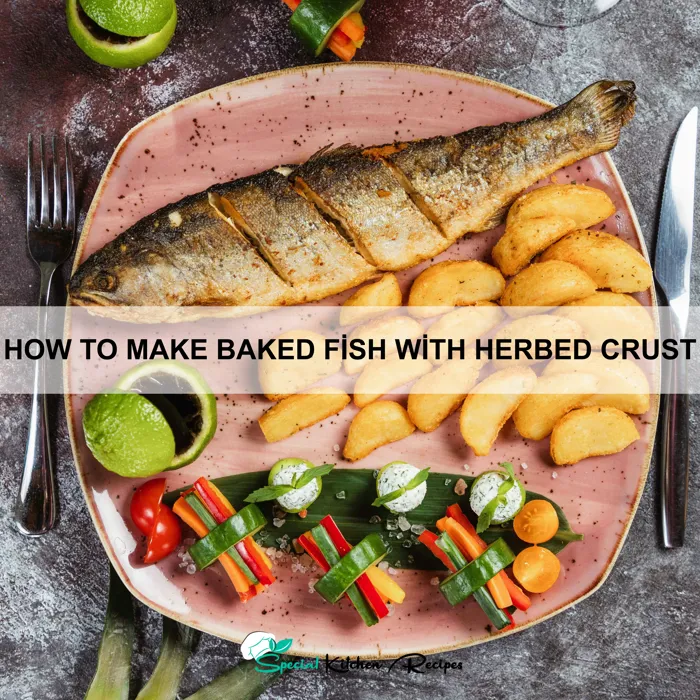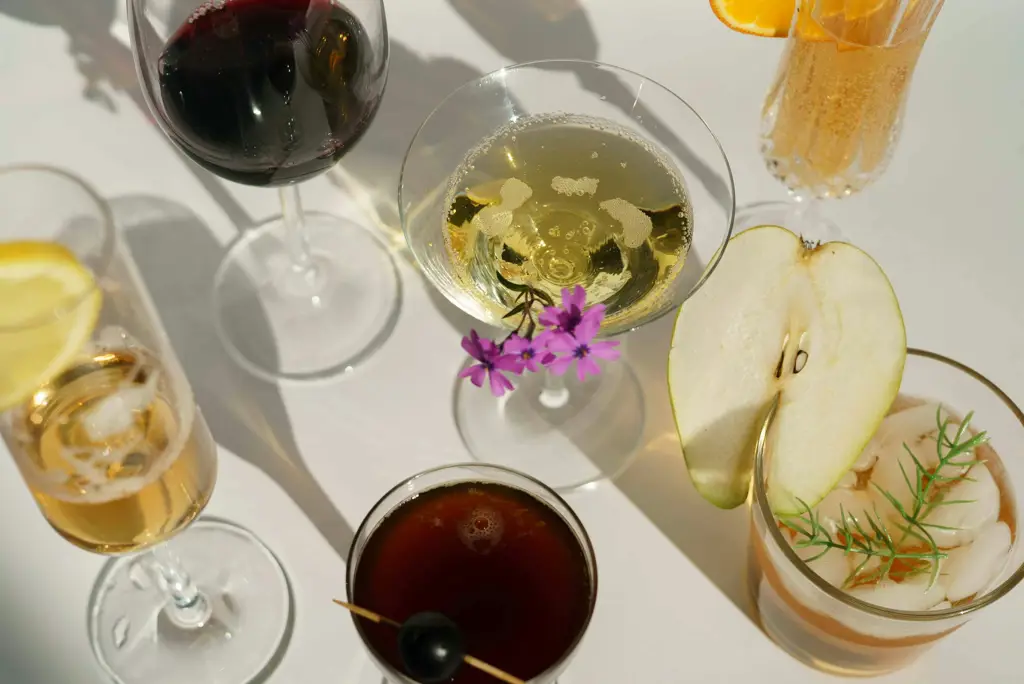Baked fish, a culinary staple across numerous cultures, boasts a history as rich and varied as its preparation methods. While pinning down a single origin point is impossible, evidence suggests that cooking fish in ovens or earth ovens dates back millennia. Ancient civilizations, from the Egyptians to the Greeks, utilized various techniques to bake fish, often incorporating herbs and spices readily available in their regions. The herbed crust variation, however, likely emerged later, potentially coinciding with the increased availability and understanding of diverse herbs in medieval and Renaissance Europe. Recipes featuring aromatic crusts evolved through centuries of culinary experimentation, reflecting regional flavors and traditions.
The cultural significance of baked fish is undeniable. Globally, fish represents a significant source of protein, particularly in coastal communities where it forms a cornerstone of traditional diets. In Mediterranean cultures, for instance, baked fish dishes are integral to celebratory meals and everyday fare alike. The abundance of fresh seafood in these regions has fostered a deep culinary tradition around its preparation, with countless variations on baked fish recipes handed down through generations. Statistics show that fish consumption globally is on the rise, driven by increasing awareness of its health benefits. This trend has, in turn, led to a greater exploration and appreciation of diverse cooking methods, including the increasingly popular baked fish with herbed crust.
The appeal of baked fish with a herbed crust lies in its simplicity and versatility. The crust, a flavorful barrier, protects the delicate fish while imparting unique tastes. Herbs like dill, thyme, parsley, and rosemary are common choices, each contributing distinct aromatic notes. Beyond herbs, the crust can incorporate breadcrumbs, nuts, or even grated cheese, offering endless possibilities for culinary creativity. This dish is not only delicious but also a healthy option, offering lean protein and essential omega-3 fatty acids. Its ease of preparation further contributes to its popularity, making it a perfect choice for weeknight dinners or special occasions. The precise origins of this particular dish may be lost to time, but its enduring appeal is a testament to its deliciousness and adaptability.
Ingredients and Measurements
This recipe for Baked Fish with Herbed Crust yields two generous servings. Accurate measurements are crucial for optimal results, so please use a kitchen scale for the most precise quantities, especially when measuring the fish fillets.
Fish: 2 (6-ounce) skin-on white fish fillets (cod, halibut, or snapper are excellent choices). Ensure the fillets are of similar thickness for even cooking. Thicker fillets will require a slightly longer baking time. If using frozen fish, thaw it completely in the refrigerator overnight before proceeding.
Herb Crust: The herb crust is where the magic happens! We’ll be using a vibrant blend of fresh herbs. If fresh herbs aren’t available, you can substitute with 1 tablespoon of dried herbs (reduce the quantity by about 1/3). Remember to finely chop the herbs for a smoother, more evenly distributed crust.
- 1/4 cup finely chopped fresh parsley (approximately 1/2 ounce)
- 2 tablespoons finely chopped fresh chives (approximately 1/2 ounce)
- 1 tablespoon finely chopped fresh thyme leaves (approximately 1/2 ounce)
- 1 tablespoon finely chopped fresh dill (approximately 1/2 ounce)
Other Ingredients: These elements contribute to the overall flavor and texture of the dish.
- 2 tablespoons unsalted butter, softened (Use softened butter for easy spreading and incorporation into the herb mixture)
- 1 tablespoon olive oil (High-quality olive oil will enhance the flavor profile)
- 1 clove garlic, minced (or 1/4 teaspoon garlic powder)
- 1/4 teaspoon salt (adjust to taste)
- 1/8 teaspoon freshly ground black pepper (adjust to taste)
- 1 lemon, cut into wedges (for serving)
Important Note: The quantities of salt and pepper are suggestions and can be adjusted according to your preference. Always taste and season to your liking. Start with less and add more gradually to avoid over-seasoning.
Optional additions: For a richer crust, you can add 1/4 cup of panko breadcrumbs to the herb mixture. A squeeze of lemon juice added to the herb mixture before spreading enhances the brightness of the flavors.
Equipment List
Preparing delicious baked fish with a herbed crust requires the right tools to ensure even cooking and a beautiful presentation. This equipment list details everything you’ll need, from essential cookware to helpful gadgets.
Baking Dish: You’ll need a baking dish that’s appropriately sized for your fish fillets. A 9×13 inch baking dish is generally suitable for 4-6 fillets, depending on their size. Avoid using a dish that’s too small, as overcrowding will prevent even cooking and lead to steaming rather than baking. A larger dish is preferable if you have more fillets or larger fish portions.
Mixing Bowls: At least two mixing bowls are recommended. One medium-sized bowl (approximately 8-inch diameter) will be used for preparing the herbed crust, and a smaller bowl (approximately 6-inch diameter) can be used for whisking any additional sauces or glazes if desired. Choose bowls that are easy to clean and made of materials like glass or stainless steel for durability.
Measuring Cups and Spoons: Accurate measurements are crucial for consistent results. Invest in a set of measuring cups (1 cup, ½ cup, ⅓ cup, ¼ cup) and measuring spoons (1 tbsp, ½ tbsp, 1 tsp, ½ tsp, ¼ tsp). Using a kitchen scale for weighing ingredients, especially herbs and spices, will improve the accuracy and consistency of your crust.
Cutting Board and Sharp Knife: A sturdy cutting board is essential for safely preparing the fish and herbs. A sharp chef’s knife (approximately 8 inches) will make it easier to fillet the fish and finely chop the herbs. Remember to always use caution when handling knives.
Baking Sheet (Optional): While not strictly necessary, a baking sheet placed underneath the baking dish can catch any spills and make cleanup easier. This is especially helpful if you’re using a glass baking dish.
Pastry Brush (Optional): If you choose to brush the fish with oil or a glaze before baking, a pastry brush will ensure even coating. A silicone pastry brush is easy to clean and durable.
Foil (Optional): Foil can be used to create a loose tent over the baking dish during the last few minutes of cooking to prevent the fish from over-browning. This is particularly useful for thinner fillets.
Oven Mitts or Gloves: Essential for safely removing the hot baking dish from the oven. Always use oven mitts or gloves to protect your hands from burns.
Preparation of Fish
Selecting the right fish is crucial for a delicious baked dish. For this recipe, we recommend firm, white-fleshed fish fillets like cod, halibut, or snapper. Aim for fillets that are approximately 6-8 ounces each. Avoid fillets that are overly thin or excessively thick; aim for a uniform thickness of about 1 inch for even cooking.
Once you’ve chosen your fish, thoroughly rinse the fillets under cold running water. Gently pat them dry with paper towels. Removing excess moisture is vital for achieving a crispy crust. Leaving the fillets damp will result in a soggy, rather than a beautifully crisp, finished product.
Now, let’s address any potential imperfections. Carefully examine each fillet for any bones that may have been missed during filleting. Use tweezers to remove any visible bones. Thoroughly removing bones is essential for a pleasant dining experience. It’s better to take a few extra minutes to ensure a bone-free fillet.
Depending on the thickness of your fillets, you may want to score the top surface of the fish. This involves making shallow, diagonal cuts across the fillet, being careful not to cut all the way through. Scoring helps the fish cook more evenly and allows the herbed crust to adhere better, resulting in a more flavorful and attractive final product.
If your fillets are particularly thick (over 1 inch), you might consider butterflying them. This involves making a horizontal cut about halfway through the thickness of the fillet, opening it like a book. This significantly reduces cooking time and ensures the fish cooks evenly throughout. Butterflying is particularly helpful for thicker fillets to ensure they are cooked through without overcooking the edges. Remember to season both sides generously with salt and freshly ground black pepper before proceeding with the herbed crust.
Finally, before placing the prepared fillets onto the baking sheet, consider lightly oiling the baking dish or using parchment paper to prevent sticking. This ensures easy removal and prevents the fish from breaking apart during the baking process.
Making the Herb Crust
Creating a flavorful and aromatic herb crust is key to a delicious baked fish. This recipe uses a combination of fresh herbs for maximum impact. We’ll start by preparing the herb mixture, ensuring even distribution for consistent flavor throughout the crust.
Begin by finely chopping 1/4 cup of fresh parsley, 2 tablespoons of fresh chives, and 1 tablespoon of fresh thyme. Use a sharp knife for the best results and to avoid bruising the herbs, which can release bitterness. If you don’t have fresh herbs, you can substitute with 2 tablespoons of dried mixed herbs, but remember that dried herbs are more concentrated, so use a slightly lighter hand.
In a medium bowl, combine the chopped herbs with 1/4 cup of panko bread crumbs. Panko breadcrumbs create a wonderfully crisp crust. You can substitute regular breadcrumbs, but panko offers a lighter, airier texture. Avoid using too many breadcrumbs, as this can make the crust heavy and dense.
Next, add 2 tablespoons of grated Parmesan cheese to the herb and breadcrumb mixture. Parmesan adds a salty, umami depth to the crust. Feel free to experiment with other hard cheeses like Pecorino Romano or Asiago for a different flavor profile.
Now, incorporate 2 tablespoons of melted unsalted butter. The melted butter helps bind the ingredients together and contributes to the crust’s golden-brown color and richness. Ensure the butter is melted but not hot, to prevent cooking the herbs prematurely. Gently toss everything together until evenly combined. The mixture should be moist but not soggy.
Finally, season the herb mixture generously with salt and freshly ground black pepper. Taste and adjust seasoning as needed. Remember that the fish itself will also be seasoned, so don’t over-salt the crust. Your fragrant and flavorful herb crust is now ready to be applied to your fish!
Assembly and Baking
With your fish fillets prepped and your herbed crust ready, it’s time to assemble and bake your delicious creation. Preheat your oven to 400°F (200°C). This temperature ensures even cooking and a beautifully crisp crust without overcooking the delicate fish.
Lightly grease a baking dish – an oven-safe skillet or a shallow baking pan works perfectly. Using a non-stick baking dish will prevent sticking and make cleanup much easier. A light coating of olive oil or cooking spray is sufficient.
Gently place your fish fillets in the prepared baking dish. Ensure there’s enough space between each fillet to allow for even heat distribution. Overcrowding can lead to steaming instead of baking, resulting in a less crispy crust and potentially soggy fish.
Now, for the crucial part: applying the herbed crust. Depending on the consistency of your mixture, you may choose to use a spoon or your hands. If using your hands, ensure they are clean and dry to prevent the crust from becoming sticky. Spread the herbed crust evenly over the top of each fillet, pressing it gently to adhere to the fish. Aim for a consistent layer of about ¼ inch thickness. You should have enough crust to generously cover each fillet.
For added flavor and moisture, you can add a tablespoon of butter or olive oil to the top of each crust. This will help the crust brown beautifully and add a richness to the overall dish. Don’t overload with butter; a tablespoon per fillet is ample.
Place the baking dish in the preheated oven and bake for 12-15 minutes, or until the fish is cooked through and flakes easily with a fork. Cooking time may vary depending on the thickness of your fillets. Thicker fillets will require a longer baking time. To check for doneness, gently insert a fork into the thickest part of a fillet; it should flake easily.
Once cooked, carefully remove the baking dish from the oven and let the fish rest for a few minutes before serving. Allowing the fish to rest prevents it from becoming dry and allows the juices to redistribute, resulting in a more tender and flavorful final product. Serve immediately and enjoy your perfectly baked fish with herbed crust!
Checking for Doneness
Determining the perfect doneness for baked fish is crucial to achieving a flaky, moist, and delicious result. Overcooked fish becomes dry and tough, while undercooked fish presents a food safety risk. There are several reliable methods to ensure your herbed-crusted fish is cooked through without being overdone.
The Flake Test: This is the most common and reliable method. Gently insert a fork into the thickest part of the fish fillet. If the fish flakes easily with minimal resistance, it’s ready. If it resists flaking or feels gummy, it needs more time in the oven. A good benchmark is that the fish should flake easily into large, moist pieces.
The Internal Temperature Test: For greater accuracy, especially with thicker fillets, use a food thermometer. Insert the thermometer into the thickest part of the fish, avoiding the bone. The internal temperature should reach 145°F (63°C). This ensures the fish is cooked through and safe to eat. Remember to clean your thermometer thoroughly after each use.
Visual Cues: While not as reliable as the flake or temperature test, visual cues can provide helpful indicators. The fish should appear opaque and no longer translucent, especially in the thicker portions. The edges should be cooked through and slightly firm to the touch. However, rely primarily on the flake or temperature test, as visual cues can be misleading, especially with variations in fish thickness and oven temperatures.
Timing Considerations: While recipes often provide estimated baking times, they should be considered guidelines rather than rigid rules. Oven temperatures can vary, and fish thickness significantly impacts cooking time. Thicker fillets will naturally require longer baking times. Always start checking for doneness at the lower end of the suggested time range and continue checking at 2-3 minute intervals to prevent overcooking.
Important Note: Overcooked fish is difficult to salvage. Undercooked fish, on the other hand, can be returned to the oven for a few more minutes. Therefore, it’s always better to slightly undercook the fish and check for doneness frequently rather than risk overcooking it.
By employing a combination of these methods – the flake test, internal temperature check, and visual observation – you’ll consistently achieve perfectly cooked, flavorful baked fish with a delightful herbed crust.
Recommendations
For optimal flavor and texture, we recommend using fresh, high-quality fish fillets. Firm, white fish like cod, halibut, or snapper work exceptionally well with this herbed crust. Ensure the fish is patted completely dry before applying the crust to promote even browning and crispiness. Avoid overcrowding the baking dish; allow space between fillets for even cooking.
Serving Suggestions: This baked fish is incredibly versatile. It pairs beautifully with a simple side salad featuring fresh greens, lemon vinaigrette, and cherry tomatoes. Roasted asparagus or green beans also complement the dish wonderfully. For a heartier meal, consider serving it with creamy mashed potatoes or a light risotto. A squeeze of fresh lemon juice just before serving brightens the flavors.
Storage: Leftover baked fish can be stored in an airtight container in the refrigerator for up to 3 days. Reheat gently in the oven or microwave until heated through. Avoid overcooking, as this can dry out the fish. Freezing is not recommended, as the texture of the fish may be compromised upon thawing.
Complementary Dishes: The herbed crust lends itself well to a variety of flavors. A light, citrusy sauce, such as a lemon-dill sauce or a vibrant chimichurri, would enhance the dish. A side of crusty bread is perfect for soaking up any delicious pan juices. Consider pairing this dish with a crisp white wine, such as Sauvignon Blanc or Pinot Grigio.
Nutritional Information (Approximate per serving, based on a 4-ounce fillet): Calories: 250-300; Protein: 25-30g; Fat: 10-15g; Carbohydrates: 5-10g. Note: Nutritional information will vary depending on the type of fish used and the specific ingredients in the herbed crust. This is an estimate and may not be completely accurate.
Important Note: Always ensure your fish is cooked to a safe internal temperature of 145°F (63°C) to prevent foodborne illness. Use a food thermometer to check the doneness of the fish.





